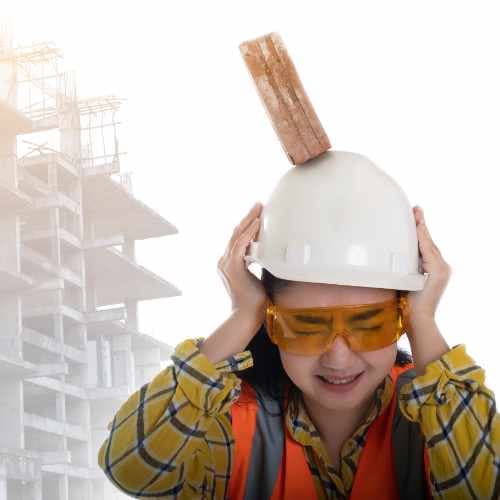HEAD PROTECTION: Does it matter what Hard Hat I choose?
In the realm of workplace safety, the choice of personal protective equipment (PPE) plays a pivotal role. Among the essential gear, the hard hat stands as a sentinel for the head, safeguarding against potential hazards. It may seem like a simple decision, but the type of hard hat you choose can significantly impact your safety on the job.

Protection for your most valuable body part - your brain.
The Importance of Proper Head Protection
When it comes to job site safety, protecting your head is non-negotiable. Choosing the right hard hat or safety helmet is essential for reducing the risk of serious injury. Understanding the key differences between ANSI Type I and Type II hard hats is critical for making informed decisions that align with your specific workplace hazards.
Head Protection Zones: Understanding Type I vs. Type II
Hard hats aren’t one-size-fits-all, and selecting the right type is vital. Type I hard hats are designed to protect against impacts from above, relying on a suspension system to absorb shocks. Type II hard hats provide additional protection from both top and side impacts, incorporating foam to absorb lateral forces. The right choice depends on the hazards you face daily, whether it’s falling objects or potential side impacts in construction, mining, or other high-risk environments.

Adherence to ANSI and CSA Standards
Selecting a hard hat isn’t just about choosing any helmet—it's about ensuring it meets the ANSI Z89.1-2014 and CSA Z94.1-15 standards. These certifications guarantee that your hard hat has undergone rigorous testing and complies with North American safety requirements. Always check that your headgear is certified to maintain a safe and compliant workplace.
Conducting a Workplace Risk Assessment
Before selecting a hard hat, it's important to perform a detailed risk assessment. Identifying hazards like falling debris, side impacts, or electrical risks will guide you in choosing the right protection. Type I might suffice for general construction, while Type II is a better fit for environments with heightened risks of side impact injuries.
Comfort and Wearability
A hard hat is only effective if worn properly and consistently. Factors like comfort, weight, and adjustability play a significant role in whether workers comply with safety standards. A poorly fitting or uncomfortable hard hat can lead to non-compliance, putting workers at greater risk. Ensure that the hard hat you choose fits well and is comfortable for long-term wear.
Choosing the Right Hard Hat: Key Considerations
Choosing the best hard hat for your job site isn't just about brand names or aesthetics—it’s about safety, comfort, and functionality. By selecting a helmet that complies with industry standards, suits your work environment, and is comfortable enough for daily use, you take proactive steps toward a safer workplace. Remember, your safety is not just in your hands—it’s on your head.
Choosing the right hard hat is not a decision to be taken lightly. It goes beyond aesthetics or brand names; it involves a careful consideration of the specific risks in your workplace. By selecting a hard hat that meets standards, aligns with your work environment, and ensures comfort, you are taking a proactive step towards maintaining a secure and injury-free workplace. Remember, your safety is in your hands, or in this case, on your head.
Housekeeping guidelines for our hard hats?
Safety Hard Hats & Safety Helmets

















